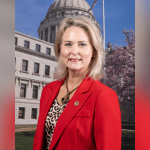The Small Business Optimism Index increased 6.2 points in June to 100.6 with eight of the 10 components improving and two declining.
Owners anticipate improving sales as the economy continues to reopen with expectations rebounding to a net 13% after April’s lowest reading in survey history (a net negative 42%). Small business owners continue to be optimistic about future business conditions and indicate they expect the recession to be short-lived.
“Small businesses are navigating the various federal and state policies in order to reopen their business and they are doing their best to adjust their business decisions accordingly,” said NFIB Chief Economist Bill Dunkelberg. “We’re starting to see positive signs of increased consumer spending, but there is still much work to be done to get back to pre-crisis levels.”

NFIB State Director Dawn Starns said, “Our members realize it may be months before the economy fully recovers, and they are committed to following the guidelines and keeping employees and customers as safe and healthy as possible so the recovery comes sooner rather than later.”
Key findings from the survey:
- The NFIB Uncertainty Index decreased one point in June to 81.
- Earnings trends over the past 3 months declined to a net negative 35%, the lowest reading since March 2010.
- The percent of owners who think now is a good time to expand improved 8 points to 13% of owners.
- Job creation plans increased 8 points to a net 16%.
Down from May, 48% of owners reported capital outlays in the next 6 months, the lowest level since December 2010. Of those making expenditures, 32% reported spending on new equipment (down 3 points), 18% acquired vehicles (down 2 points), and 14% improved or expanded facilities. Five percent acquired new buildings or land for expansion and 9% spent money for new fixtures and furniture.
Twenty-two percent plan capital outlays in the next few months, up 2 points from May. Plans are trending up but remain at recession levels.
A net negative 31% of all owners (seasonally adjusted) reported higher nominal sales in the past three months, down 12 points from May. Re-opening the economy has been slow, especially in the services sector including travel, entertainment, salons, and other more public-facing businesses.
The net percent of owners expecting higher real sales volumes improved 37 points to a net 13% of owners. The historic 61-point drop over March and April has been followed by a 55-point increase over the past 2 months as owners are expecting higher sales with business re-openings.
Also improving from May, the net percent of owners reporting inventory increases went up 1 point to a net negative 14%. Inventory levels are surprisingly low. Owners had little time to manage their inventory position after the pandemic and had a drop in customers unexpectedly and quickly. Once states began to re-open, some owners had trouble getting some of the items for their customers.
The net percent of owners planning to expand inventory holdings increased from May by 5 points to a net 7% as sales improved. This is one of the highest readings historically and good news for growth.
Seasonally adjusted, the net percent of owners raising average selling prices rose 9 points to a net negative 5%. Unadjusted, 18% reported lower average selling prices and 15% reported higher average prices. Price hikes were the most frequent in retail (12% higher, 23% lower, and wholesale (18% higher, 28% lower). A net 12% (seasonally adjusted) plan price hikes, up 3 points from May.
A net 14% (seasonally adjusted) reported raising compensation, well below the 36% reading in February prior to the pandemic. A net 13% plan to do so in the coming months, up 3 points from May. Eight percent of owners cited labor costs as their top business problem.
Nineteen percent of owners selected “finding qualified labor” as their top business problem. The coronavirus disruption for millions of workers did not change the skills of the existing workforce. Consequently, there was no improvement in firms’ ability to find the skills required to fill their open positions.
The frequency of reports of positive profit trends fell 9 points to a net negative 35% reporting quarter on quarter profit improvements, the lowest reading since March 2010. Among the owners reporting weaker profits, 61% blamed weak sales, 9% blamed usual seasonal change, 5% cited price changes, 3% cited labor costs, and 1% cited martial costs. For the owners reporting higher profits, 65% credited sales volumes and 19% credited usual seasonal change.
Unchanged from May, 3% of owners reported that all their borrowing needs were not satisfied. Thirty-four percent reported all their credit needs were met and 54% said they were not interested in a loan. A net 3% reported their last loan was harder to get than in previous attempts. Overall, access to capital is not a serious problem, likely due to the popularity of the Paycheck Protection Program that most small business employers have accessed.
One percent reported that financing was their top business problem. The net percent of owners reporting paying a higher rate on their most recent loan was negative 9%, up 4 points. The Federal Reserve policies have driven interest rates to historically low levels.
Click here to view the NFIB Small Business Economic Trends Survey.
About the Small Business Economic Trends: The NFIB Research Center has collected Small Business Economic Trends data with quarterly surveys since the 4th quarter of 1973 and monthly surveys since 1986. Survey respondents are drawn from a random sample of NFIB’s membership. The report is released on the second Tuesday of each month. This survey was conducted in April 2020. For more information about NFIB, please visit NFIB.com.







